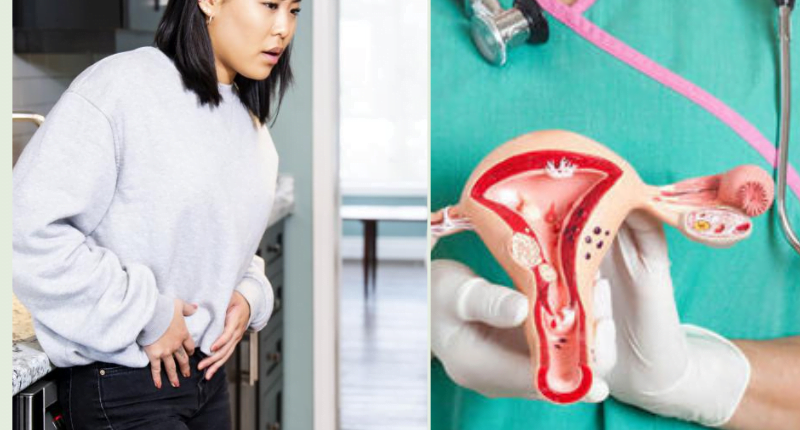What are the dying symptoms of cervical cancer? – Cervical cancer is a type of cancer that starts in the cervix, the lower part of the uterus that opens into the vagina. It is usually slow-growing cancer. In most cases, it takes years for cervical cancer to develop.
Most cervical cancers are found at an early stage, when they are small and have not spread. The chance of surviving cervical cancer is very high when it is found early. However, if cervical cancer is not found early, it can grow and spread to other parts of the body.
When cervical cancer spreads outside the cervix, it is called metastatic cervical cancer. Metastatic cervical cancer is hard to treat and can be fatal.
There are two main types of cervical cancer: squamous cell carcinoma and adenocarcinoma. Squamous cell carcinoma starts in the thin, flat cells lining the cervix. Adenocarcinoma starts in the glandular cells that make up mucus and other fluids.
Cervical cancer usually does not have symptoms in its early stages. When symptoms do occur, they may include:
-Abnormal bleeding from the vagina, including bleeding after sex or between periods
– Vaginal discharge that is watery, bloody, or foul-smelling
– Pelvic pain or pain during sex
– Leg pain or swelling
These symptoms can also be caused by other conditions, so it’s important to get any unusual symptoms checked by a doctor.
The most reliable way to prevent cervical cancer is to get vaccinated against the human papillomavirus (HPV), which can cause cervical cancer. The HPV vaccine is recommended for all preteen girls and boys. It’s also important to have regular screenings for cervical cancer, even if you have been vaccinated.
Cervical cancer can be a serious and life-threatening condition, but it can often be prevented and treated if it is found early.
Causes of Cervical Cancer
Cervical cancer is most often caused by the human papillomavirus (HPV). HPV is a group of viruses that can infect the skin and mucous membranes. There are more than 150 types of HPV, and some types can cause cervical cancer.
Most women with cervical cancer have no symptoms in the early stages of the disease. When symptoms do appear, they may include:
-Abnormal bleeding from the vagina, including bleeding between periods or after menopause
-Increased vaginal discharge
-Pelvic pain or pain during sex
Cervical cancer typically takes years to develop. In most cases, the cancer is found at an early stage through screening tests, such as a Pap smear. However, some women with cervical cancer do not get regular screenings and the disease is not found until it has progressed to an advanced stage.
Stages of Cervical Cancer
End-stage cervical cancer is the most advanced stage of the disease. It is important to be aware of the signs and symptoms of end-stage cervical cancer so that you can seek treatment as soon as possible.
The first stage of end-stage cervical cancer is metastasis. Metastasis is when the cancer spreads from the cervix to other parts of the body. The most common places for metastatic cervical cancer to spread are the lungs, liver, and brain. Symptoms of metastatic cervical cancer include fatigue, shortness of breath, pain in the chest or abdomen, neurological problems, and skin changes.
The second stage of end-stage cervical cancer is organ failure. This occurs when the cancer spreads to vital organs such as the heart or kidneys and begins to interfere with their functioning. Symptoms of organ failure include shortness of breath, fatigue, confusion, and swelling in the abdomen or extremities.
The third and final stage of end-stage cervical cancer is death. This may occur due to organ failure or spread of the cancer to other parts of the body. Symptoms at this stage are similar to those experienced in earlier stages, but may also include coma or death.
Don’t miss | 10 signs you may have a stomach parasite
Risk Factors for Developing Cervical Cancer
There are many risk factors for developing cervical cancer, and it is important to be aware of them so that you can take steps to reduce your risk. One of the most significant risk factors is human papillomavirus (HPV) infection. Other risk factors include smoking, having a family history of cervical cancer, being over the age of 40, and having a weakened immune system.
If you have any of these risk factors, it is important to talk to your doctor about how you can reduce your risk of developing cervical cancer. There are vaccines available that can help protect against HPV infection, and there are also screening tests that can help catch cervical cancer early when it is most treatable.
Dying symptoms of cervical cancer: Signs and Symptoms of End-Stage Cervical Cancer
End-stage cervical cancer is a serious and potentially life-threatening condition. It is important to be aware of the signs and symptoms of this disease so that you can seek medical help if necessary.
The most common symptom of end-stage cervical cancer is pelvic pain. This pain can be constant or intermittent, and may be worse during certain activities such as sexual intercourse or urination. Other symptoms include:
– fatigue
– weight loss
– appetite loss
– bleeding from the vagina
– bone pain
– neurological problems such as numbness or weakness in the legs
If you experience any of these symptoms, it is important to see a doctor as soon as possible. Early diagnosis and treatment of end-stage cervical cancer can improve your chances of survival.
You may also like | Symptoms of clogged arteries – causes, prevention and food
Treatment Options for End-Stage Cervical Cancer
End-stage cervical cancer is a very serious condition that requires immediate medical attention. The good news is that there are treatment options available for those who are diagnosed with this condition. The first step in any treatment plan is to see a doctor as soon as possible. Early detection is key in treating any type of cancer, and cervical cancer is no exception.
Once you have seen a doctor, they will likely recommend one or more of the following treatment options: surgery, radiation therapy, chemotherapy, or targeted therapy. Surgery is often the first line of defense against end-stage cervical cancer. During surgery, the surgeon will remove the tumor(s) from your cervix. This can be done via a hysterectomy (removal of the uterus) or a radical trachelectomy (removal of the cervix and surrounding lymph nodes).
Radiation therapy uses high-energy beams to kill cancer cells. This type of therapy can be used alone or in combination with other treatments such as surgery or chemotherapy. Chemotherapy uses powerful drugs to kill cancer cells. This type of treatment can also be used alone or in combination with other treatments such as surgery or radiation therapy. Targeted therapy is a newer type of treatment that uses drugs to target specific genes or proteins that are found in cancer cells. This type of therapy can be used alone or in combination with other treatments such as surgery, radiation therapy, or chemotherapy.
No matter what treatment option you and your doctor decide on, it is important to remember that end-stage cervical cancer is a serious condition and requires immediate medical attention. Talk to your doctor about your treatment options so you can make the best decision for your health.
Coping with Dying Symptoms of Cervical Cancer
Cervical cancer is a serious disease that can have a major impact on a woman’s health. However, it is important to remember that cervical cancer is treatable and the vast majority of women diagnosed with the disease will go on to lead long, healthy lives.
That said, there are some women who will develop end-stage cervical cancer. This is typically defined as cancer that has spread beyond the cervix and into other parts of the body, such as the lungs or liver. End-stage cervical cancer can be incredibly difficult to cope with both physically and emotionally.
If you or someone you love has been diagnosed with end-stage cervical cancer, it is important to understand that you are not alone. There are many resources available to help you cope with this difficult situation. Here are just a few ideas to get you started:
• Talk to your doctor about all of your treatment options. It is important to make sure you understand all of the risks and benefits associated with each option before making any decisions.
• Seek out support from family and friends. Talking about your feelings can be very helpful in dealing with them. You may also want to consider joining a support group for women with end-stage cervical cancer.
• Take care of yourself physically and emotionally. Eating a healthy diet, getting regular exercise, and getting enough rest can help you feel your best during this difficult time. Additionally, don’t hesitate to reach out for professional help if you are feeling overwhelmed or depressed.
• Spend time doing things that make you feel happy and fulfilled. Try to focus on the positive aspects of your life, such as relationships with family and friends or activities that bring you joy.
• Create a “bucket list” of things you would like to do before the end-stage cancer takes over. This can be anything from taking a trip to another country to writing a book. Doing something for yourself can give you a sense of purpose and control in an otherwise difficult situation.
End-stage cervical cancer is a serious diagnosis, but it doesn’t have to define your life. There are many resources available to help you cope with this difficult situation, so don’t hesitate to reach out for help when needed.
Conclusion On Dying Symptoms of Cervical Cancer
Living with end-stage cervical cancer can be a difficult and challenging experience. It is important to stay informed about the signs and symptoms of end-stage disease so that you can seek prompt medical attention if needed. Additionally, it is beneficial to practice healthy habits such as maintaining a balanced diet, exercising regularly, getting regular check-ups, and avoiding smoking or drinking alcohol in order to reduce your risk of developing cervical cancer altogether. Understanding what you need to know about the signs and symptoms of end-stage cervical cancer will help ensure that you take steps towards preventing this disease in its early stages. Learn more | Cervical Cancer: Prevention Tips To Lower Your Risk
After dying symptoms of cervical cancer | Kindly see more health stories before you go!









